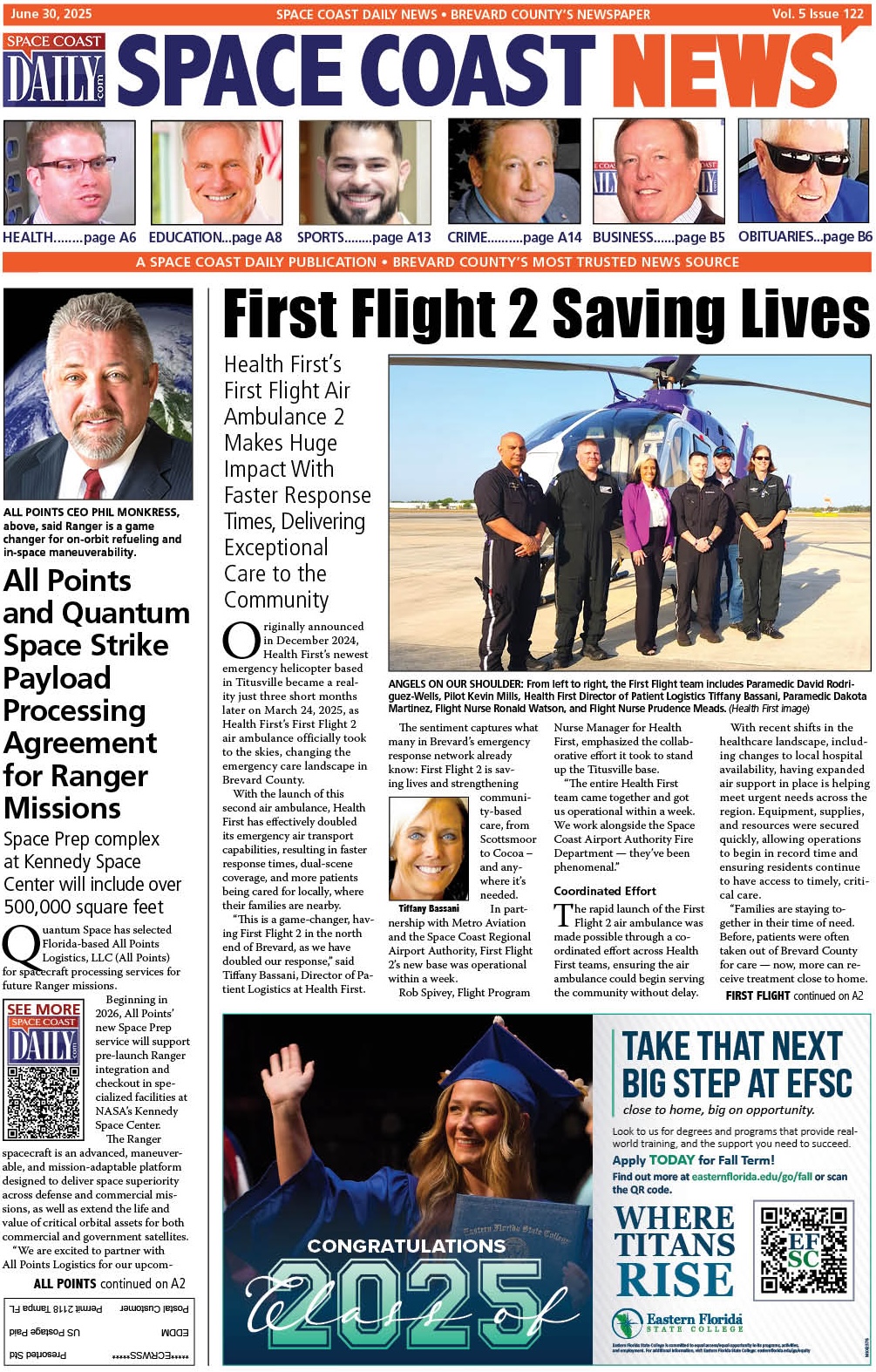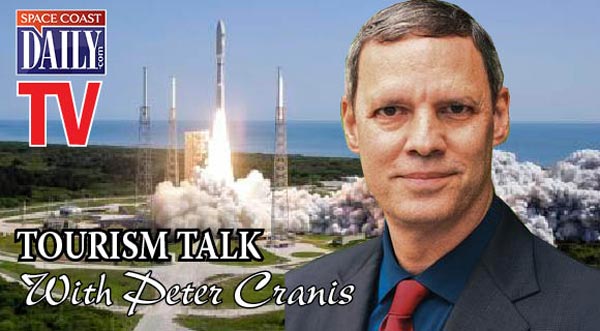New Horizons Spacecraft En Route To Explore Pluto
By Space Coast Daily // August 30, 2013
Will Arrive In July 2015
(VIDEO nvdktube)
BREVARD COUNTY • CAPE CANAVERAL, FLORIDA – Think of it as a high-tech spacecraft about the size of a grand piano speeding through the cosmos on a mission to explore a distant dwarf plant very little is known about.

This is not science fiction, but an actual little-known NASA mission.
The space agency launched the $700 million New Horizons robotic spacecraft from Pad 41 at Cape Canaveral Air Force Station in January 2006 on a flyby mission to study Pluto and its moons.
Reaching Pluto required New Horizons to achieve a speed of more than 36,000 mph in an earth and solar escape trajectory, which is the greatest launch speed ever recorded for a man-made object to date.
In April 2006, New Horizons flew past Mars, then by Jupiter in February 2007 and Saturn in June 2008. By March 2011, New Horizons passed Uranus and is expected to arrive at Pluto around July 2015.
Power sources
The New Horizons spacecraft employs a plutonium-powered radioisotope thermoelectric generator to operate in the deepest regions of space where sunlight is scarce.
For years many considered Pluto to be our solar system’s ninth planet, but at just 2,500 kilometers wide, that classification has been downgraded to dwarf planet. In 1978, Pluto’s large moon Charon was found and the entire system has intrigued astronomers and scientists as almost a “double planet.”
Pluto was first discovered in 1930 by American astronomer Clyde Tombaugh while making observations at the Lowell Observatory in Arizona.
For years many considered Pluto to be our solar system’s ninth planet, but at just 2,500 kilometers wide, that classification has been downgraded to dwarf planet.
In 1978, Pluto’s large moon Charon was found and the entire system has intrigued astronomers and scientists as almost a “double planet.”
Lying beyond the extent of the inner planetary and outer gas giant planets of the solar system, Pluto is an icy world with a chaotic orbit with average temperatures of minus 387 degrees Fahrenheit.
It is the only known planet containing an atmosphere that freezes and then thaws with every orbit.
Pluto has polar caps and exhibits regular snowfalls of methane, nitrogen and carbon monoxide.

The opportunity to study the Pluto system fascinates scientists who will use New Horizons to examine the origin of the dwarf planet, formation of its moons, its relationship with Charon, its interior properties and the evolution of the surface of icy worlds and volatile atmospheres like Pluto.
Preparation for arrival
The New Horizons team has been practicing for the Pluto flyby for the past several years, building on the experience and success of the spacecraft’s 2007 flight through the Jupiter system.
In April, scientific instrumentation was powered on trained upon Pluto.
In May, the New Horizons team completed the first real test that operators couldn’t fully duplicate on their computers. Mission operators at the Johns Hopkins Applied Physics Laboratory in Maryland transmitted 9,675 commands into New Horizons’ computers that guided all activities for the spacecraft.
“We’re really testing the things we can’t simulate on the ground very well, such as the actual slewing – the movement of the spacecraft to point the science instruments – directed by the guidance and control system,” said Alice Bowman, New Horizons mission operations manager at APL. “We’ll also look hard at those slews to make sure there was enough time between the end of one observation and the start of another.”
“We’re really testing the things we can’t simulate on the ground very well, such as the actual slewing – the movement of the spacecraft to point the science instruments – directed by the guidance and control system,” said Alice Bowman, New Horizons mission operations manager at APL. “We’ll also look hard at those slews to make sure there was enough time between the end of one observation and the start of another.”
The simulation began with a system-health check-in through NASA’s Deep Space Network. The New Horizons spacecraft then turned from Earth and toward the spot where it was programmed to find Pluto.
A few hours later, the spacecraft turned back to Earth and sent a quick burst of data to let operators know it was operational. Then it returned to studying Pluto. As many as four science instruments were employed from New Horizons to observe the planet at the same time.
New Horizons was able to finish its annual systems and instrument payload checkout and is traveling through space at a speed of more than 34,000 mph between the orbits of Uranus and Neptune, about 2 billion miles from Earth.
In July, the New Horizons team powered the spacecraft down for its remaining voyage to Pluto.












